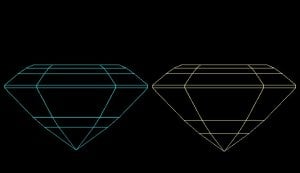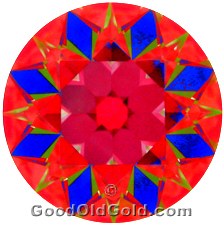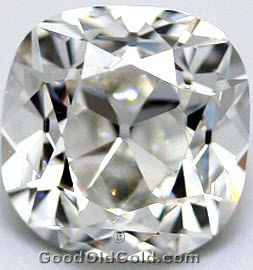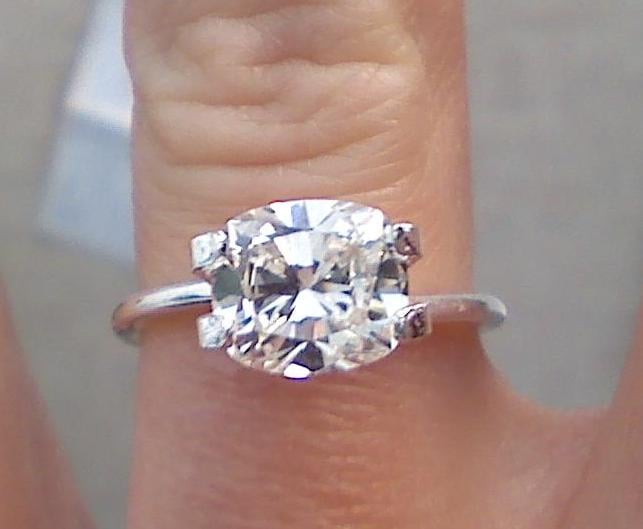- Joined
- Apr 30, 2005
- Messages
- 42,064
As an ongoing discussion from this thread - https://www.pricescope.com/community/threads/cushion-cut-stats-what-do-you-think.136266/ chunkycushionlover as questioned the usefulness of knowing the crown height measurements in cushion cuts.
This is a valid and interesting question and one worth discussing! I personally believe that crown heights in cushions and other fancy shapes are useful to know as PART of the overall picture along with images such as ASET, videos and detailed photographs and so forth. Knowing the crown height won't guarantee the beauty/optics/performance/ fire of any diamond but I think it is a useful value to know. With vendors that provide cushions and other fancy shapes of good cut quality or are cut for optical performance the CH is almost always mentioned and available for the buyer, so it would be interesting to hear from these experts how they feel about the validity of knowing the crown height, not only for them but how useful they feel it is for the cushion/ fancy shape buyer to know.
The question is; is it worth pursuing the crown height and asking a vendor to get this measurement if it isn't already provided or is it not really necessary? The Sarin or Helium scan itself provides other detailed measurements which is really of little to no value to the layperson and even some enthusiasts ( in my opinion) however it seems over a long period of time that the crown height which appears on these scans has been useful to buyers and hobbyists.
Bear in mind that no images or amount of information can truly tell any buyer whether they are going to love a diamond or not or whether a particular stone is going to be suitable without comparing and viewing in person, or that a particular diamond is definitely going to behave in a certain way.
Please discuss!
This is a valid and interesting question and one worth discussing! I personally believe that crown heights in cushions and other fancy shapes are useful to know as PART of the overall picture along with images such as ASET, videos and detailed photographs and so forth. Knowing the crown height won't guarantee the beauty/optics/performance/ fire of any diamond but I think it is a useful value to know. With vendors that provide cushions and other fancy shapes of good cut quality or are cut for optical performance the CH is almost always mentioned and available for the buyer, so it would be interesting to hear from these experts how they feel about the validity of knowing the crown height, not only for them but how useful they feel it is for the cushion/ fancy shape buyer to know.
The question is; is it worth pursuing the crown height and asking a vendor to get this measurement if it isn't already provided or is it not really necessary? The Sarin or Helium scan itself provides other detailed measurements which is really of little to no value to the layperson and even some enthusiasts ( in my opinion) however it seems over a long period of time that the crown height which appears on these scans has been useful to buyers and hobbyists.
Bear in mind that no images or amount of information can truly tell any buyer whether they are going to love a diamond or not or whether a particular stone is going to be suitable without comparing and viewing in person, or that a particular diamond is definitely going to behave in a certain way.
Please discuss!















300x240.png)